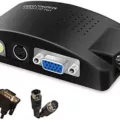The Jelly Comb wireless mouse stands out as a practical choice for Mac users, thanks to its dual-mode connectivity that includes both USB and Bluetooth. This design ensures it works effortlessly with various Mac devices, making tasks smoother and more efficient.
With this guide, connecting your Jelly Comb wireless mouse to your Mac becomes a simple and hassle-free process, unlocking the full potential of this feature-packed device.
Features and Compatibility of Jelly Comb Wireless Mouse
One of the highlights of the Jelly Comb wireless mouse is its dual-mode connectivity, allowing effortless switching between a USB connection and a Type-C interface. Whether it’s an older Mac or the latest MacBook Pro/Air, this mouse adapts with ease.
Another impressive feature is its Bluetooth support, which removes the need for dongles or cables, keeping desks neat and clutter-free. Devices like the iMac and iPads pair effortlessly, ensuring a streamlined experience for users juggling multiple gadgets.
This Mac-compatible wireless mouse is built to work seamlessly with devices running macOS 10.10 or later, with Bluetooth 4.0 as the minimum requirement. Meeting these specs ensures a smooth connection and responsive performance every time. The convenience it brings to both work and personal setups is hard to overlook.
Having a mouse that switches effortlessly between devices and modes feels like a small, daily win. It reduces the interruptions caused by constantly plugging and unplugging, letting productivity flow uninterrupted. The ergonomic design also means long hours of use don’t leave hands feeling strained—a thoughtful detail that makes a noticeable difference.
The Jelly Comb Bluetooth mouse checks all the boxes for functionality, comfort, and compatibility, offering features designed to fit seamlessly into any Mac user’s routine. It’s a tool that blends practicality with ease, making it a must-have for those who value convenience.
Preparing Your Mac and Mouse for Connection
To get started with your Jelly Comb wireless mouse on a Mac, a little preparation goes a long way. Begin by making sure the mouse is fully charged or has fresh batteries—nobody likes a connection dropping mid-task.
Next, open your Mac’s Bluetooth settings by clicking the Apple icon in the top-left corner, selecting “System Preferences,” and then “Bluetooth,” to confirm that Bluetooth is turned on.
For USB or Type-C modes, it’s helpful to know which one your mouse uses and have a working port ready for a receiver-based connection if needed.
Taking these steps will smoothly prepare your Mac for Jelly Comb mouse setup, making the process frustration-free and efficient.
Step-by-Step Guide to Connecting via USB or Type-C Receiver
First, you should place the USB receiver into its specific port. Macs featuring only Type-C ports may need an adapter to support USB Type-A receivers. Once it is plugged in, verify that your mouse is powered on, then confirm the correct mode is selected, because some models have a toggle for Red (USB) and Green (Type-C) modes.
You can then enter pairing mode by holding down the left, middle and right buttons until the indicator light starts blinking. Using these basic setup steps ensures the Jelly Comb USB receiver connection or Type-C mouse setup Mac is quick and efficient, making the wireless mouse setup Mac hassle-free.
Connecting via Bluetooth on macOS
You need to first turn Bluetooth on in your Mac either through the Bluetooth icon at the menu bar or by going to System Preferences > Bluetooth. Once you turn on the Jelly Comb mouse, you need to initiate pairing mode by pressing and holding the designated button until the indicator begins to flash. This indicates that the device is ready to connect.
After enabling Bluetooth, your mouse will be listed among available devices on your Bluetooth settings page. After selecting the Bluetooth device from the available list, the Jelly Comb mouse will become operable within seconds.
Troubleshooting Connection Issues
Experiencing Jelly Comb mouse connection issues on a Mac can be a bit frustrating, but there are simple steps that can help. If pairing fails, ensure the mouse is in pairing mode and check that Bluetooth is turned on and working properly on the Mac.
For anyone trying to troubleshoot wireless mouse problems, resetting the mouse by switching it off and on can often work wonders. Clearing previous pairings on the Mac before reconnecting might also help. Disconnections can sometimes be caused by interference or outdated macOS software, so keeping the system updated and minimizing nearby device interference is a good idea.
To fix Bluetooth mouse connection problems, checking for updates, switching USB ports (if using a receiver), and ensuring the receiver is firmly plugged in can all make a difference. With these steps, the connection process usually gets back on track smoothly.
Benefits of Using the Jelly Comb Wireless Mouse with Mac
The Jelly Comb wireless mouse provides Mac users with an outstanding solution that combines ergonomic use and functional design. Its ergonomic wireless design allows users to enjoy sustained comfort because it fits the natural hand position without causing strain.
Using Jelly Comb’s dual-mode system gives users the ability to switch between Bluetooth and 2.4GHz wireless operation anytime they need more versatile device usage. The mouse combines dependable wireless connectivity with macOS compatibility to offer easy integration for Mac users and keep their operating experience efficient.
Conclusion
Setting up the Jelly Comb wireless mouse for Mac operation is an effortless process. Turning on the mouse and activating pairing mode sets the stage for quick setup, while selecting it in Bluetooth settings completes the Jelly Comb mouse connection. A dual-mode wireless mouse combined with an easy Bluetooth connection provides Mac users with a seamless computing experience.








